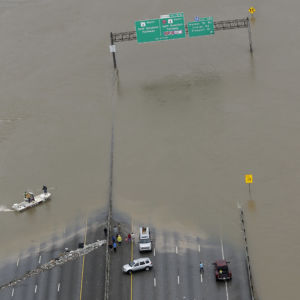The holiday season is upon us and countless Americans are still suffering the after-effects of a devastating hurricane season coupled with raging wildfires out West. Puerto Rico, for instance, just requested $94 billion in federal aid to address massive power outages and damage to homes and infrastructure, which contributed to an already-serious financial crisis.
The recovery process is still very much in its critical phase for many communities full of people trying to piece their lives back together. In American states and territories, the process for obtaining disaster assistance is complex and daunting, and these shortcomings are particularly harmful to some of our most vulnerable populations.
In order for a community to recover quickly, residents need timely access to emotional, financial and physical support. This can come in multiple forms, including family support, insurance payouts, formal federal assistance and nonprofit donations. The ease with which people can acquire such resources determines the success of recovery.
In a recent study, we found that the complexities of the federal aid application process after Superstorm Sandy hit the northeastern United States reduced the ability of foreign-born residents and individuals with low levels of education to receive funds.
In other words, FEMA individual assistance was less likely to go to immigrants or people who did not finish high school.
This does not mean FEMA officials intentionally withheld aid to anyone. It’s far more likely that those in need were unable to navigate the bureaucratic process because of complicated paperwork and having less political capital to appeal decisions or petition for resources.
Similar criticisms have been made about the confusing nature of the application process for FEMA’s Road Home program following Hurricane Katrina.
Government regulations intended to protect citizens during normal times can also hinder the recovery process. After Katrina, several regulatory roadblocks increased the amount of time it took to rebuild. For instance, the city of New Orleans required residents to obtain official approval from city inspectors for any repairs made to wind- and water-damaged homes.
Such requests helped the city determine which neighborhoods should receive utilities first, but it also meant residents had to wait weeks before rebuilding.
Likewise, the city’s redevelopment plans added uncertainty for residents. Because their neighborhoods could be designated to become green space, people had to wait for more information before investing their time and money into the arduous rebuilding process.
If our most vulnerable populations cannot turn to government, how can they receive the help they need?
On the bright side, our research has also found that local leaders and entrepreneurs can step up to this challenge by finding ways to share information and best practices on how to apply for, petition for, and ultimately receive resources from government, nonprofits and businesses.
For example, when the Vietnamese population in New Orleans East found out that their community was designated to become greenspace in the aftermath of Katrina, they turned to a community leader named Father Vien for help. He personally visited parishioners scattered across different states, documented who planned to return, and appealed to the media to demonstrate that his community was worth saving.
Father Vien also petitioned for FEMA trailers for the community’s elderly. Without his leadership and knowledge of the political process, his community may not have been able to recover as quickly as it did.
In the months ahead, the diverse array of disaster-affected communities should seek reforms that help those who need assistance the most. Such reforms should include simplifying the application process and offering services to help residents navigate government bureaucracy. In addition, we should look to empower residents and local leaders to discover unique solutions on their own.

